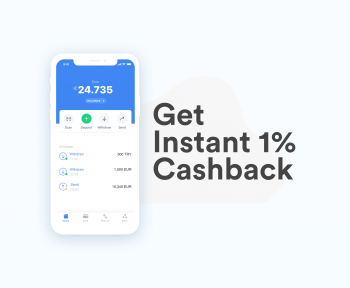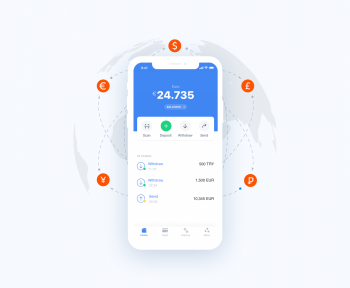Personal loans can be life saving sometimes. Whether it’s swapping the day job for self-employment, starting a new life in a city you’ve always hoped to live in, or getting your financial life on track. Maybe it’s time to do some renovation in your property, whatever your goal is some of them require money to help achieve them.
With some sound planning, there are ways a personal loan can help you make some of your biggest dreams real.
Achieve Your Goals through Personal Loans
Popular reasons to apply for a personal loan:
- Loan
- Debt consolidation
- Home improvement projects
- Vacations
- Weddings
- Major medical expenses.
In each of the above areas, a personal loan could allow you to achieve your goal in the here and now, like planning your dream honeymoon, while making fixed monthly payments over time. An added benefit is that you’ll know exactly when and how much your payment will be every month. Fixed rates are important for financially healthy individuals because they allow you to plan ahead and account for the regular payment within your budget. Here are some important tips for you to check before applying for a personal loan.
Check Your Credit Score and Credit History
Sometimes it can be difficult to obtain personal loans if you don’t have a good credit score. Credit scores are important because most lenders use them to help determine whether you’re approved for loans, what interest rate you’re charged and how much you can borrow.
Your credit scores aren’t the only factor lenders look at to evaluate your credit profile and decide whether to approve a personal loan application. There’s no particular score that guarantees you’ll get approved or be offered a good interest rate.
There are lenders that offer loans to people with credit scores that fall in varying ranges, but you’re more likely to get a lower interest rate and better terms with higher credit scores. The minimum credit score you need to be approved for a personal loan depends on the lender. Some lenders state their requirements upfront. Try to be transparent as much as possible about your credit score. Please don’t forget that in many countries most banks and financial entities can legally view your credit score or other loans.
Pick a personal loan type
Here are the five different types of personal loans to consider:
- Unsecured loans – an installment loan that is paid back in monthly increments over time. Since it isn’t backed by collateral, this type of loan can be easier to acquire if you have good credit.
- Secured loans – an installment loan that is backed by collateral, such as a car, savings account or another asset. If the borrower defaults on the loan, the lender can seize the asset to cover all or a portion of the balance.
- Cosigned loans – an unsecured or secured loan that has more than one party guaranteeing repayment. If you have bad credit or no credit history at all, a lender may ask you to have a cosigner, who will assume and pay the loan if you default.
- Debt consolidation loans – combines multiple debts into a single loan with a single monthly payment. Borrowers can use it to pay off credit cards, medical bills, payday loans, and other personal loans.
- Personal line of credit – This loan is a revolving form of credit, similar to a credit card. In contrast to an installment loan that involves a lump sum repaid in monthly payments, borrowers are given access to a line of credit for a certain time period. Once the draw period expires, the borrower must pay back the line of credit in full. The borrower then has to reapply to keep the line open.
Doesn’t matter what type of credit you are thinking of applying for, be clear about the amount you want to get and check your budget for monthly payments. It is important to be realistic about your loan and repayments as it might damage your credit score if you have other plans in the que for the future such as a big mortgage or a new car.
Look Around
Personal loans are available from a variety of different providers, including credit unions, banks, and online finance companies. These different loan providers will usually have a selection of personal loan options, including:
Different loan amounts (how much money you borrow).
Varying interest rates (how much you pay for borrowing the money).
Diverse loan terms (how long you have to repay the loan).
It can pay to shop around, as one personal loan is not necessarily like another. Finding one that works for you can take some time, but it’s often worth it, as your payments, terms, and interest rate will be as beneficial as possible.
One thing to consider as you shop around is how your credit score may be affected if you apply for multiple loans. It’s standard for credit bureaus to count inquiries from auto and mortgage lenders as one hard inquiry, but it’s not quite as clear for options like personal loans.
Read the Contract and Ask Questions
Personal loans are usually fairly straightforward, but it’s important to ask questions. This makes it much easier to understand the loan’s terms and what to expect throughout the process. Questions you should consider asking:
How much is the interest rate? The interest rate is presented as a percentage and tells you how much you’re paying to borrow the money.
What’s the annual percentage rate (APR)? The APR is the percentage of your loan’s total value that you pay annually for your loan, including fees. Along with the interest rate, this is essential information about how much you’ll pay to use the lender’s money.
Is there an origination fee? This is the amount a lender may charge for processing your loan paperwork.
Some institutes may offer you extra products such as insurance or directly include them within the loan payment. If you think this is the case, ask for more and clear information. Don’t forget that you don’t need to accept other products or services just to get a personal loan.
What kind of interest is it? Adjustable-rate loans can carry big surprises as the interest rate can fluctuate over the life of the loan. Fixed-rate interest remains the same throughout the life of the loan, meaning you know exactly what to expect from your monthly payments.



